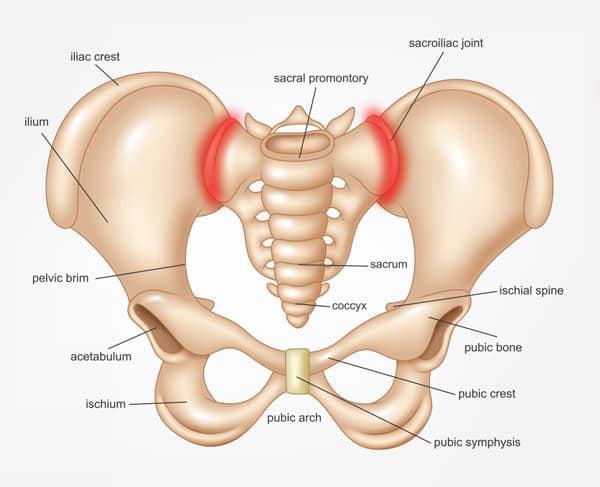What are the Symptoms of SI Joint Pain?
SI Joint Dysfunction often presents as pain in the lower back or the back of the hips. Pain may also be present in the groin and thighs. In many cases, it can be difficult to determine the exact source of the pain. Your physician can perform specific tests to help isolate the source of the pain. The pain is typically worse with standing and walking and improved when lying down. Inflammation and arthritis in the SI joint can also cause stiffness and a burning sensation in the pelvis.
The most common symptoms of sacroiliac joint dysfunction are:
- Pain in the lower back or the back of hips
- Pain in the groin area and thighs
- Increased pain while walking or standing for a long period of time
- Pain relief while lying on one’s back
- A stiffness or burning feeling in the hips
Same Day Appointments Available
What Causes Sacroiliac Joint Pain?
As with most other joints in the body, the SI joints have a cartilage layer covering the bone, which allows for some movement and acts as a cushion between the bones. When this cartilage is damaged or worn down, the bones begin to rub on each other. This is the most common cause of a condition called SI Joint Dysfunction.
There are many different terms for sacroiliac (SI) joint dysfunction, including sacroiliac joint disorder, sacroiliac joint syndrome, sacroiliac joint strain and sacroiliac joint inflammation. Each of these terms refers to a condition that causes pain in the sacroiliac joints and results in lower back pain and/or leg pain.
Will SI Joint Dysfunction Prevent Me from Normal Activities?
Many people with sacroiliac joint dysfunction are able to resume their normal activities after treatment. You’ll want to speak with a SpineOne physician to plan your particular treatment and get back into the swing of things.
What Kinds of Treatments for Sacroiliac Joint Pain are Available?
Some of the most common treatments for sacroiliac joint dysfunction include:
- Rest
- Physical therapy
- Medication
- Ice and heat therapy
- Interventional therapies (injections)




